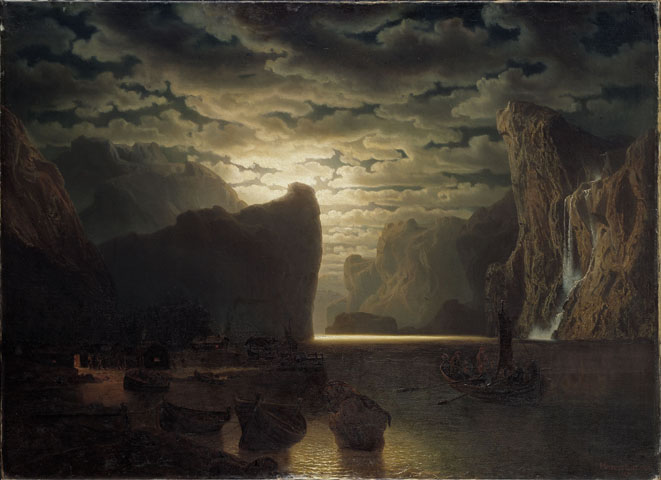To its detractors, nineteenth-century Sweden was little more than a provincial backwater. The country’s population numbered just a few million, there was no railway system and the network of roads left vast tracts of the countryside all but impenetrable. But one man’s wilderness was another man’s paradise, and with the rise of Romanticism came a new sense of national pride in the country’s expanses of untamed nature. The virgin forest, the unspoiled lake, the clear and freshening sky – these things were the God-given birthright of every Swede. Ramblers’ associations sprang up throughout the country. Painters were urged to put on their walking boots and record the majesty of the natural scene. The result was a sudden flowering of art, albeit one that remains little known outside Sweden itself. This is the subject of a small but engaging exhibition at the Barber Institute in Birmingham: “ ‘The History of Natural Beauty’: Swedish Landscape Painting 1850-1910.”
Sweden’s landscape painters did not want for encouragement. To paint the wilds of the country was nothing less than a patriotic duty, because it was to preserve, forever, the world of ancient Scandinavia – home to the heroes of the great old tales and sagas. In 1853, Crown Prince Charles – later King Charles XV – declared that “We have a wonderful country, perhaps not radiant in sunshine but all the more in seriousness and vigour... And so the history of natural beauty of this, the land of our fathers, shall be the main subject of our art – together they build a temple, and thus shall the work of our artists be also the worship of our Lord of nature, the Almighty God.” The future king was speaking in his capacity as Chancellor of the Stockholm Academy of Art. The message to Sweden’s painters...


